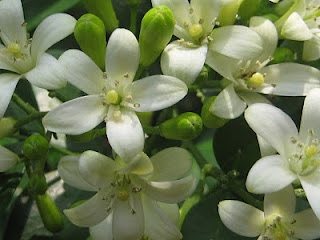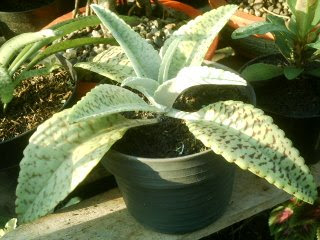
Sidney
- Di masa mendatang, ketika teknologi pengobatan medis berkembang sedemikian
pesat, bukan tidak mungkin ditemukan cara membangkitkan orang mati, untuk hidup
kembali. Itulah yang ada di benak orang-orang penganut cryonics. Cryonics
adalah proses membekukan orang mati agar jaringan tubuhnya tidak rusak,
sehingga di masa yang akan datang saat ditemukan cara membuat manusia hidup
lagi, tubuhnya tidak rusak. Philip Rhoades (54), seorang ahli biologi Australia
mendapat izin dari pemegang otoritas kesehatan negaranya untuk membangun cryonics
center. Di tempat tersebut, maka tubuh manusia akan dibekukan dengan suhu
minus 150 derajat celcius dalam cairan nitrogen. "Kedua orangtuaku tipe
orang yang suka ilmu pengetahuan sepertiku. Saudara-saudara kandungku juga
tertarik pada percobaan-percobaan yang hebat," ujar Rhoads kepada surat
kabar Herald Sun, seperti dilansir AFP, Minggu (27/8/2006). Diberitakan
koran tersebut, pemerintah negara bagian New South Wales telah menyetujui
pembentukan pusat pembekuan itu. Rhoades telah menghabiskan US$ 490.000 untuk
mengembangkan rencana tempat penyimpanan tubuh yang telah beku di bawah tanah
Cowra, 200 km sebelah barat Sidney. Dalam waktu 6 bulan, dia berharap telah
berhasil membangun cryonics center di atas lahan seluas 60 hektar. Dalam
proses cryonics, darah di dalam tubuh manusia harus dikosongkan, sebelum
dibaluti cairan nitrogen untuk dibekukan. "Sekarang mulai dikembangkan
penelitian proyek genome manusia, terapi dan sejumlah penelitian tentang gen.
Segala sesuatu mungkin saja terjadi, dengan penelitian, maka hal itu hanya
menunggu waktu," imbuh Rhoades. Ibu Rhoades, Dorothy (74) yang berprofesi
sebagai guru IPA, dan ayahnya, Gerald (79) yang menjadi karyawan pabrik kimia,
kelak akan dibekukan. Namun Rhoades merasa sedih karena kekasihnya enggan
mendapat perlakuan yang sama. "Sejauh ini, pacarku tidak tertarik dengan cryonics.
Di masa depan, aku tidak bisa bertemu dia lagi, aku pasti akan sangat
kehilangan," tandasnya. Asosiasi cryonics di Australia memiliki
anggota 30 orang, 16 di antaranya telah menandatangani persetujuan untuk
dibekukan di 2 cryonics center di Amerika Serikat, dengan biaya hingga
US$ 250.000. Hingga kini, baru ada 3 cryonics center di dunia.
(Detiknews)
PEMBAHASAN
Pada tahun 1967, seorang agen rahasia Inggris
“dibekukan” sembari menunggu masa depan yang akan datang dimana musuh
bebuyutannya bangun dari tidur panjangnya dalam kebekuan untuk kembali
mengancam dunia. Masa itu tiba pada tahun 1997. Agen rahasia itu dibangkitkan kembali
setelah diawetkan dalam es selama 30 tahun untuk menyelamatkan dunia dari
kahancuran.
Mungkin Anda mengenali scenario di atas yang ada dalam
film “Austin Powers: International Man of Mystery”(1997). Ilmu pengetahuan yang
mengilhami cerita film itu benar-benar ada. Ilmu itu disebut kriogenika,
yaitu ilmu yang mempelajari tentang apa yang terjadi pada materi pada suhu yang
sangat rendah. Krionika yaitu tehnik yang digunakan untuk
mengawetkan tubuh manusia pada suhu yang sangat rendah dengan harapan suatu
hari dapat dibangkitkan kembali, sedang dikembangkan saat ini. Krionika juga
muncul dalam film seperti “Vanilla Sky”(2001), “Sleeper”(1973) dan “A Space
Odyssey”(1968). Gagasan di balik kronia adalah jika seseorang “mati”
akibat penyakit yang dideritanya, ia dapat dibekukan untuk kemudian
dibangkitkan kembali di masa depan saat teknologi pengobatan sudah dapat
menyembuhkan penyakitnya itu. Seseorang yang diawetkan sedemikian rupa
dikatakan berada dalam keadaan suspense krionika.
Untuk memahami mengenai krionika, ingat kembali cerita
dimana orang jatuh ke dalam sebuah danau es dan terendam selama hampir 1 jam
sebelum akhirnya diselamatkan. Mereka yang selamat dapat bertahan hidup
sedemikian rupa karena air es menyebabkan raga mereka dalam keadaan semacam “mati
suri” dengan memperlambat metabolisme tubuh dan fungsi otak mereka hingga pada
titik dimana mereka hampir tak membutuhkan oksigen.
Krionika bukanlah sekedar menghidupkan kembali
seseoramg setelah ia jatuh ke dalam danua es. Melakukan suspensi krionika
kepada orang yang masih hidup adalah illegal. Orangyang ingin menjalani
suspense krionika harus terlebih dahulu dinyatakan mati secara hukum yakni,
jantungnya sudah berhenti berdetak. Namun jika ia sudah mati, bagaimana mereka
dapat dihidupkan kembali? Menurutnya para Ilmuwan yang mempraktikkan krionika,
“mati secara hukum” tidak sama dengan “mati total”. Mati total menurut
mereka adalah keadaan dimana seluruh fungsi otak berhenti. Mati secara hukum
terjadi saat jantung berhenti berdetak, namun beberapa fungsi sel otak tetap
bekerja, sehingga secara teoritis, orang dapat dibangkitakan kembali di masa
depan.
A.
Krionika (Pembekuan Manusia) dalam Ilmu Fisika
Pada hukum Termodinamika II, membatasi perubahan
energy mana yang dapat berlangsung dan perubahan energy mana yang tidak dapat
berlangsung. Pembatasan ini dapat dinyatakan dengan berbagai cara yaitu:
a.
Rudolf
Clausius (1822-1888) menyatakan rumusan Claussius tentang Hukum Termodinamika
dengan pernyataan aliran kalor:
“Kalor mengalir secara spontan dari benda bersuhu
tinggi ke benda bersuhu rebdah dan tidak mengalir secara spontan dalam arah
kebalikannya”.
b.
Hokum II
Termodinamika dinyatakan dalam entropi:
“Total entropi jagat raya tidak berubah ketika proses
reversible terjadi dan bertambah ketika proses ireversibel terjadi”.
c.
Kelvin dan
Planck menyatakan rumusan yang setara sehingga dikenal rumusan Kelvin-Planck
tentang Hukum Termodinamika II tentang mesin kalor.
“Tidak mungkin membuat suatu mesin kalor yang bekerja
dalam suatu siklus yang semata menyerap kalor dari sebuah reservoir dan
mengubah seluruhnya menjadi usaha luar”.
Hukum kedua termodinamika lahir
ketika manusia mencoba memanfaatkan seluruh energi yang disuplaikan ke dalam
mesin agar bisa menghasilkan energi yang setara antara yang masuk dengan
keluarannya.
Era industri, pada abad ke-18,
merupakan awal mula pemikiran tentang efesiensi kerja tersebut. Mesin-mesin
yang diciptakan pada abad tersebut telah mengantarkan pada permasalahan baru
yakni mesin yang bekerja secara siklik, artinya, akan kembali kekeadaan awal di
mana setiap gerakan akan terjadi proses yang benar-benar tak reversibel. Hal
ini dikarenakan uap yang didinginkan dan dibuang dari silinder pada akhir
gerakan. Intinya, mesin mengambil energi panas dari sumber panas, menggunakan
sebagain energi ini untuk menghasilakn kerja yang berguna, kemudian membuang
sisanya melalui sumber yang lebih dingin (lingkungan). Energi yang hilang tadi
tidak dapat diambil kembali oleh mesin.
Sadi Carnot, seorang perwira di
korps insyiur angkatan darat Prancis di zaman Napoleon, mencoba meningkatkan
efisiensi kerja mesin, membuat model fungsi kerja dengan sebuah proses kerja
siklik yang diidealiasasi dan sekarang dikenal dengan siklus karnot.
Dia menyimpulkan bahwa kerugian
energi yang dapat diambil tidak dapat dihilangkan sepenuhnya, walaupun mesin
tersebut dirancang dengan sangat baik. Bahkan sekalipun mesin tersebut bekerja
dalam reversibel (yang perpindahan beban luarnya terlalu lambat untuk kebutuhan
praktis), efesiensinya tidak dapat melampui batas dasar yang dikenal sebagai
efesiensi termodinamik. Dengan demikian dapat dikatakan tidak ada mesin yang
seratus persen efisien.
Pernyataan di atas seharusnya jangan
hanya ditarik dalam ranah mesin semata karena bagaimanapun juga hukum-hukum
dibidang sains mempunyai korelasi dengan ranah yang lain termasuk perilaku
manusiapada era globalisasi sekarang ini dalam menciptakan mesin untuk krionika
(pembekuan manusia).
Kalor dapat dipaksa mengalir dari
benda dingin ke benda panas dengan melakukan usaha pada suatu system. Peralatan
yang bekerja dengan cara seperti ini disebut mesin pendingin contohnya kulkas
dan alat yang digunakan krikonia.
a. T1 > T2
b. Q 2 = kalor yang
diserap dari temperature rendah
c.
Q 1 = kalor yang diberikan pada temperature tinggi
d. W = Q 1 - Q 2 =
kerja atau usaha yang diperlukan
Ukuran penampilan sebuah mesin
pendingin dinyatakan dengan koefisien daya guna (koefisien performansi) yang
diberi dengan lambang
Semakin tinggi nilai maka
semakin baik mesin pendingin. Maka, untuk membuat alat yang digunakan dalam
krikonia maka dibutuhkan nilai koefisien daya guna ( ) yang
semakin besar.
Dengan menghubungkan Hukum
Termodinamika II maka para ilmuwan dapat menciptakan suatu alat untuk kegiatan
krionika dimana tubuh orang tersebut akan dibungkus dalam es dan diinjeksikan
heparin (sejenis antikoagulan),untuk mencegah koagulasi dalam perjalanan menuju
fasilitas krionika.Setelah berada di fasilitas kriogenika, tim krionika
membuang air dari sel tubuh orang tersebut dan menggantinya dengan campuran
kimiawi berbasis gliserol yang disebut krioprotektan, tujuannya untuk mencegah
organ dan jaringan tubuh membentuk kristal es pada suhu yang sangat rendah.
Proses yang disebut vitrifikasi (pendinginan tanpa pembekuan) ini
menyebabkan sel tubuh dalam keadaan mati suri. Kemudian tubuh orang tersebut
didinginkan pada gumpalan es kering hingga mencapai suhu -130°C (-202°F) dan
selesai proses vitrifikasi. Kemudian diletakkan ke dalam tangki logam yang
besar berisi nitogen cair pada suhu sekitar -196°C (-320°F). Tubuh disimpan
dengan posisi kepala di bawah ,antisipasi jika terjadi kebocoran tangki,otaknya
masih terendam dalam nitrogen cair. Krionika ini biayanya sangat mahal sekali.
Selain dalam Hukum Termodinamika,
dapat juga diadakan percobaan yaitu pada mayat manusia dalam air dapat terapung
karena massa jenis mayat manusia lebih kecil daripada massa jenis air sehingga
hanya sebagian volume pada mayat manusia yang tercelup dalam air sehingga
volume air yang dipindhkan lebih kecil dari volume total pada mayat manusia.











